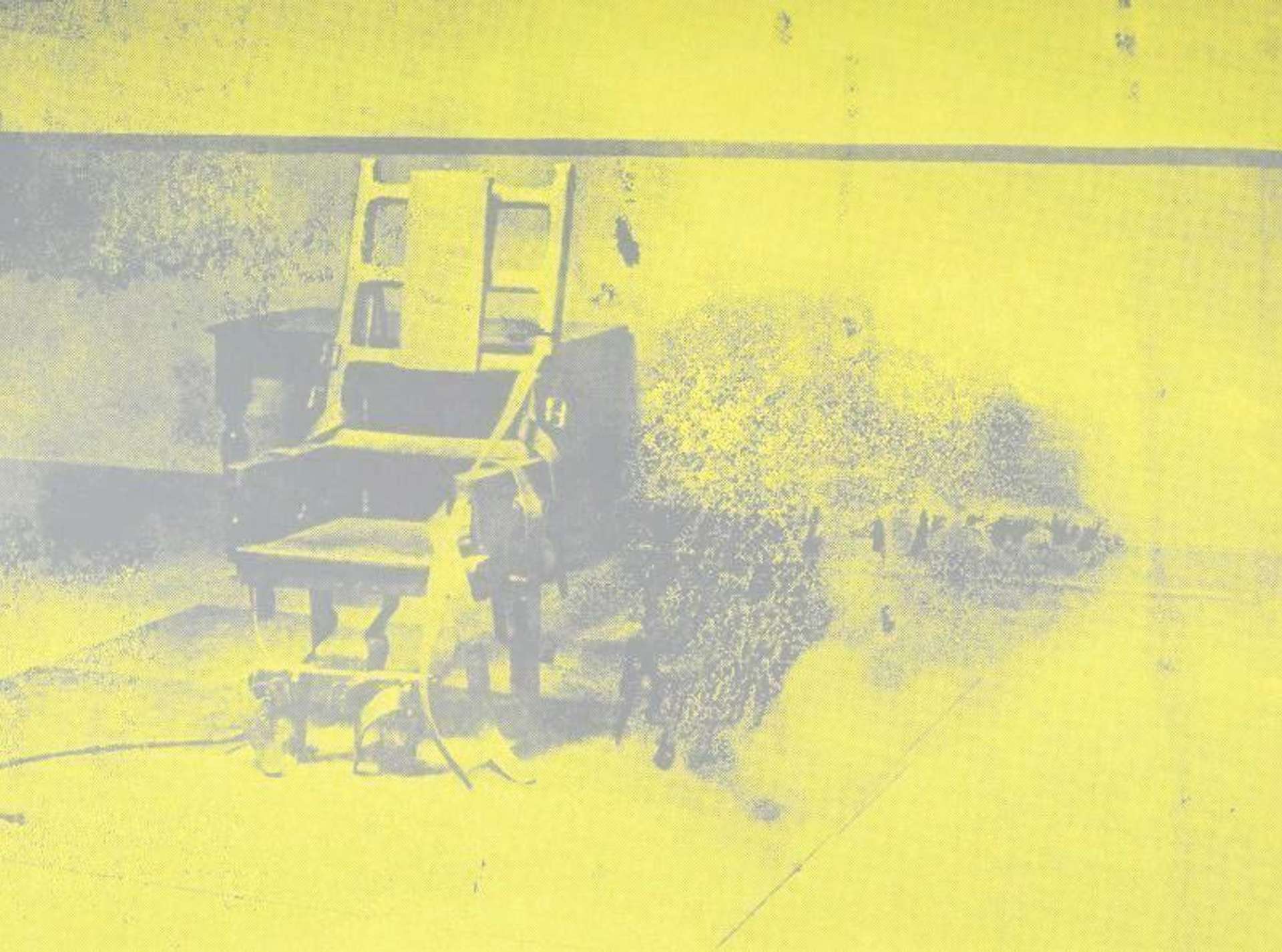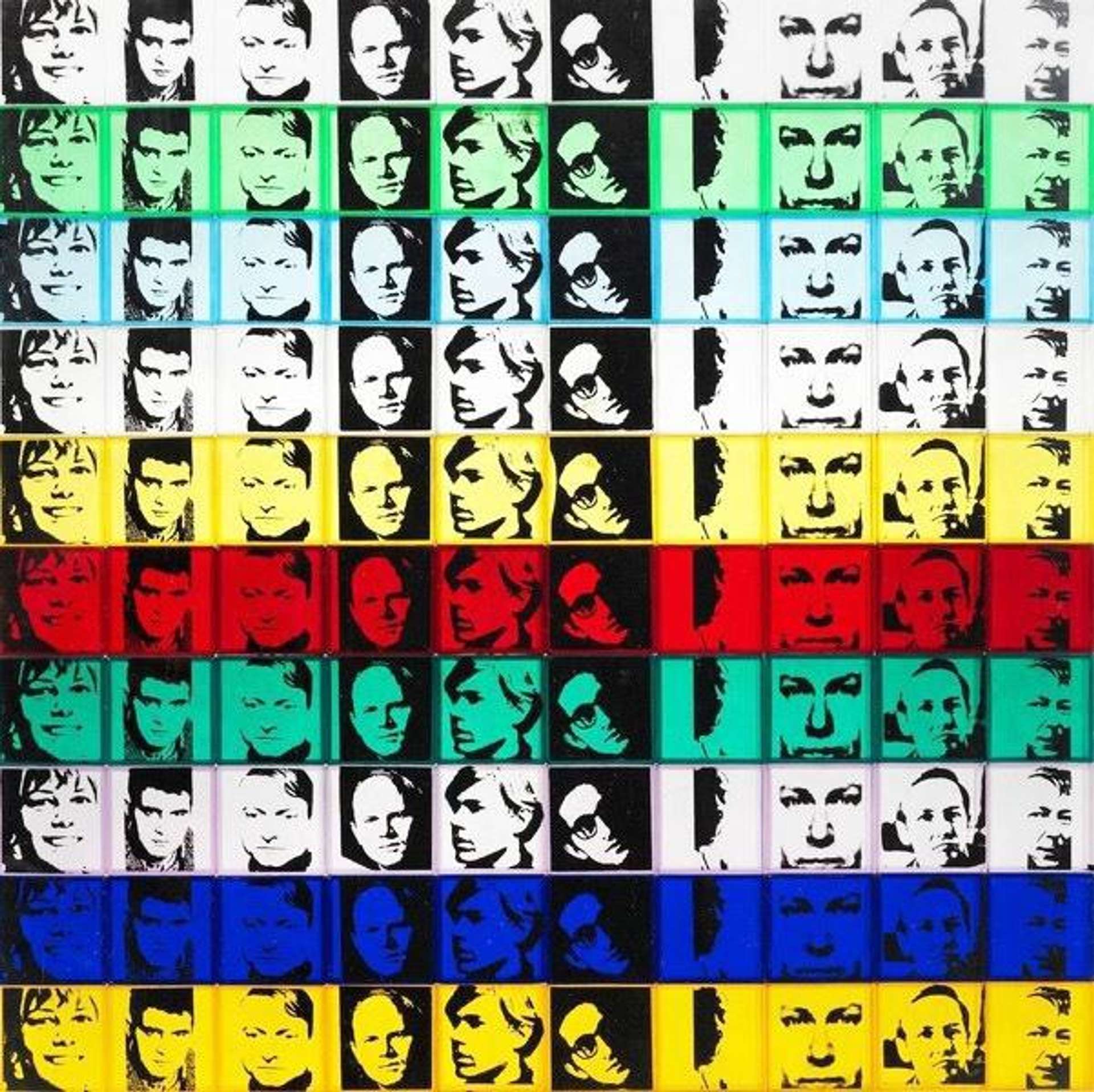 Cow (F. & S. II.11) © Andy Warhol 1966
Cow (F. & S. II.11) © Andy Warhol 1966
Interested in buying or selling
Andy Warhol?

Andy Warhol
487 works
Andy Warhol’s studio, The Factory, is probably the most well-known and notorious artist studio in history. Night after night it was the host to all kinds of debauchery, all the while Warhol was in the background turning out his celebrated screen prints.
When did Andy Warhol start his Factory?
Warhol discovered a need for assistants in his studio soon after adopting screen printing as a primary medium; he was working on mass scale, sometimes in exceptionally large sizes. With the help of his assistants, the Factory earned its name. In the summer of 1964, the first to be called his Factory created Flowers, a series of works that were produced at the rate of 80 prints a day, with the Factory turning out more than 900 prints in total, in a variety of sizes. Later on that year, Warhol moved into his second studio, the first to be widely known as the Factory.
The Factory was also a social spot, a clubhouse of sorts. Warhol’s life-long assistant, Gerard Malanga, also served as his social organiser actively seeking out the most beautiful and interesting people for Warhol. These people used The Factory as a hangout, interacting with each other and watching Warhol work, often in the silkscreen technique for which he is renowned. And while Warhol, famously antisocial despite his desire to be around people, worked in the background he would often involve his visitors, asking them for opinions on his choice of colour, or for their assistance with a print.
Why did Andy Warhol call his studio the Factory?
Actually, 'The Factory’ was a name coined by Warhol’s visitors. First and foremost it was Warhol’s studio, despite the parties and other going-ons that occurred. It was the amount of screen prints and films that were constantly being churned out of the space that lead his endless stream of glamorous visitors, who sometimes were the subjects of Warhol's paintings, to refer to it as the Factory—a name that stuck.
Among the many aquaintances forged under the roof (or, rooves) of Warhol's Factory was that he formed with fellow artist Jean-Michel Basquiat. Though Basquiat first met Warhol in a restaurant, it wasn't until he later visited Andy Warhol in The Factory that the two started up a friendship, which would result in a prolific collaboration. Read more about the artists' relationship in Jean-Michel Basquiat and Andy Warhol: An Unlikely Pair.
Where was Andy Warhol's Factory?
Across his career, Warhol actually occupied four studios, the latter three were each called The Factory. Beginning with 47th street, the name was carried to his following two at Union Square West and 33rd Street. The Factory was Warhol and his entourage of visitors and assistance, rather than the physical space in which they inhabited and worked.
Warhol’s second studio was nicknamed the Silver Factory
47th street was the most famous of his ‘factories’ primarily due to the décor. Billy Linich, hired by Warhol to design his studio, transformed the space into a world of silver. He covered the walls and ceiling arches in aluminium foil, spray painted every surface you can think of such as the toilet and the copy machine in silver and painted the floor silver. It was effectively a vision of the future and a manifestation of the now, of the world of industry that pervaded Warhol’s imagination.
The Silver Factory wasn’t just a space for visual art; it also became a hub for Warhol’s ventures into film. Using the studio as his cinematic playground, Warhol created experimental films that defied traditional storytelling and cinematic conventions. Works like Chelsea Girls (1966), an innovative split-screen portrayal of Factory life, and Sleep (1964), a minimalist study of a man sleeping for several hours, were conceived and partially filmed within its walls. Many of these films featured Factory regulars, whose presence blurred the boundaries between life and performance. Through his films, Warhol explored themes of voyeurism, celebrity, and the mundane, cementing The Factory's influence on avant-garde filmmaking.
The Factory hosted The Velvet Underground performances
Discovered by Malanga, The Velvet Underground and Warhol formed a meaningful partnership – Warhol even becoming their manager. The Factory, a space for the hottest and most interesting people in New York to hang out, soon became even more socially relevant when it began hosting Velvet Underground rehearsals and performances. Warhol’s intimate experience with the band would lead him to create experiential works for their performances, including Exploding Plastic Inevitable.
Clips from Warhol's Exploding Plastic Inevitable (1966-67), created with The Velvet Underground (@abzesxx009 via Youtube)
Warhol was shot by Valerie Solanas in the Factory
After riding up to the Factory with Warhol in the lift in 1968, Valerie Solanas, a regrettable acquaintance of Warhol’s, nearly fatally shot him in the stomach. For the rest of his life Warhol would become paranoid of unwanted visitors, those who were once so warmly welcomed at the Factory. Moving to his final studio on 33rd Street, the Factory would now have a receptionist who screened visitors, transforming it from an uncontrollable social space into a much more sterilised place of business.
If you want an entertaining introduction to Andy Warhol's art market in 2023, why not listen to our MyArtBroker Talks: Collecting Andy Warhol podcast?








